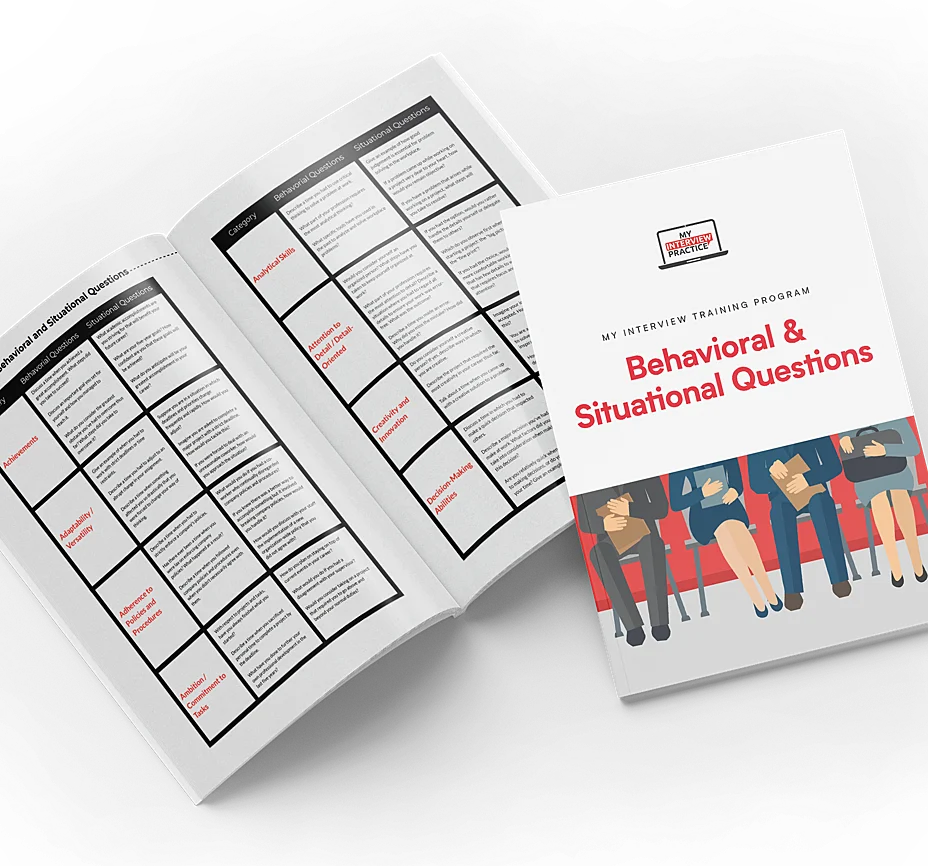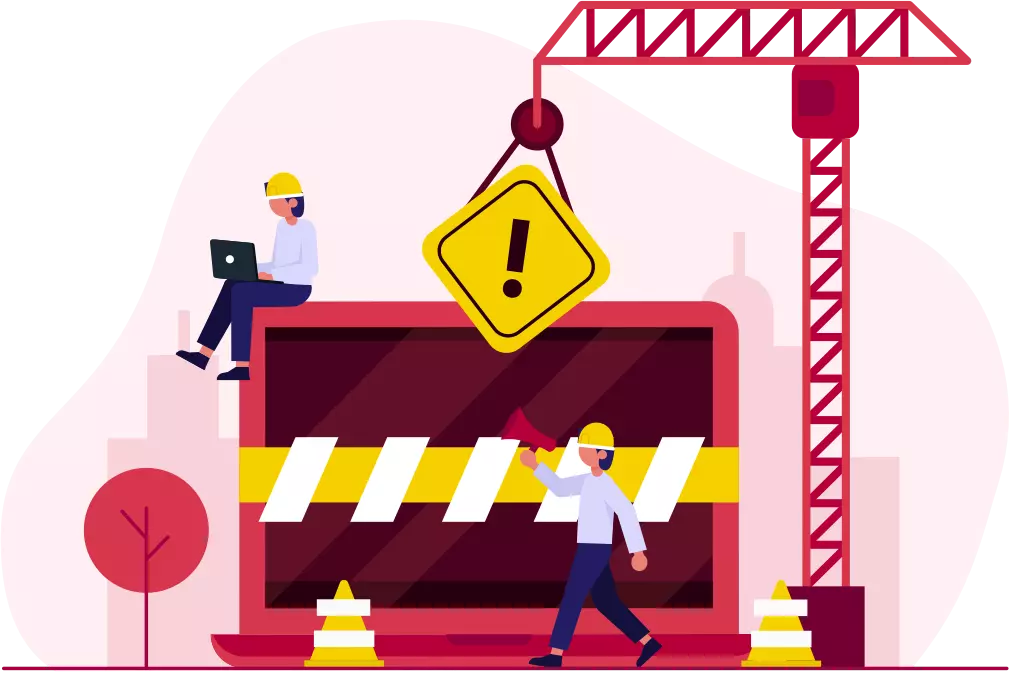 BACK
BACK
Aircraft Maintenance Technician Interview Questions
Position Summary
An aircraft or aviation maintenance technician’s primary responsibility is to repair and maintain aircraft and their systems according to Federal Aviation Administration (FAA) regulations. An aircraft maintenance technician may work on several different types of aircraft, and some may specialize in working on a specific part of the aircraft. Day-to-day duties will involve replacing, repairing, diagnosing, and testing aircraft parts to make sure they meet performance standards.
An aircraft maintenance technician must be able to manage stress well. When a plane or helicopter arrives at an airport, it is the duty of the technician to thoroughly review and perform any needed maintenance on the aircraft before it takes off. As an aircraft maintenance technician, you will need to possess expertise within your line of work and carry out your duties regularly and reliably.
Responsibilities
Aircraft maintenance technician responsibilities may include:
- Diagnosing and resolving mechanical or electrical problems
- Keeping records of maintenance work
- Replacing worn parts with hand or power tools
- Submitting work for inspection
- Inspecting aircraft frames in addition to aircraft parts
- Climbing ladders and reaching from scaffolding in fast-paced environments
Skills
Aircraft maintenance technicians are expected to possess proficiency within their field of work, whether that is general or specialized aircraft maintenance. In order to effectively inspect aircraft on a regular schedule, a skilled aircraft maintenance technician will:
- Be able to perform physically demanding work on a regular basis
- Work outside on an airfield in inclement weather.
- Be able to work in high-stress environments
- Complete repair and maintenance tasks on a strict schedule
Qualifications
Even general aircraft maintenance requires specialized skills, so aircraft maintenance technicians need to go through rigorous training. Entry-level jobs require a mechanic’s certificate which means you will need to have 18 months of practical experience with power plants or airframes or 30 months of experience working on both at the same time. In addition, you must pass a written, oral, and practical exam through the FAA.
For a senior-level position, aircraft maintenance technicians will need to go through specialized training either under a certified mechanic or at a mechanic school.

The Smarter Way to Prepare
Experience a smarter way to prepare with our interview simulator.
Aircraft Maintenance Technician Interview Questions
Question: Describe the process you use to inspect aircraft systems, including electrical, hydraulic, control, and other systems.
Explanation: This is an operational question which the interviewer will ask to determine how you go about performing the duties required for this position. The majority of questions you will be asked during an interview as an aircraft maintenance technician will be either operational or technical. The best way to respond to these types of questions is directly and concisely.
Example: “As you’re probably aware, the process used to inspect aircraft systems is very specific and detailed in the aircraft maintenance manuals. I take time to thoroughly inspect the systems following the procedures outlined in the manual to make sure nothing is missed. This is similar to the checklist that pilots follow when operating the aircraft.”
Question: Once you have completed the maintenance, what methods are used to inspect the work, certify the maintenance meets FAA standards, and verify the aircraft is ready for operation?
Explanation: This is another operational question related to the previous one. During an interview, any answer you provide to a question could elicit a follow-up question from the interviewer. Be prepared for this and keep your answers short so the interviewer has the opportunity to ask follow-up questions.
Example: “The post-maintenance inspection is just as important as the work I perform. During this process, I again use the checklist provided by the aircraft manufacturer. This provides me the opportunity to correct any errors made during the maintenance process before clearing the aircraft for flight. On occasion, I will ask one of the other maintenance technicians to perform the post-maintenance inspection.”
Question: You’ve mentioned the aircraft maintenance manuals several times. Can you describe how you read and interpret the manuals, service bulletins, and other documentation to determine the best method of repairing or replacing malfunctioning or damaged components?
Explanation: This is a follow-up question to the previous answers you provided. Interviewers will ask follow-up questions to qualify your capabilities further or to dig deeper into a topic in which they’re interested. Follow-up questions are answered the same way original questions are, but you may want to provide additional details since the interviewer is obviously interested in this topic.
Example: “Fortunately, the FAA has dictated the structure and content of aircraft maintenance manuals. This makes it easier to read, review, and locate the appropriate maintenance procedures in the manual. I also make sure to review the service bulletins for the aircraft I am working on which have been released since the last maintenance was performed. These will identify any new or updated issues the aircraft manufacturer feels are important.”
Question: What steps do you take to update repair logs, documenting all preventive and corrective aircraft maintenance?
Explanation: This is another operational question in which the interviewer is seeking to understand how you go about performing the duties required by this job. As an experienced aircraft maintenance technician, you should be able to answer these types of questions quickly. Operational questions are often answered best by providing the interviewer with a step-by-step description of how you go about performing this task.
Example: “Maintaining the repair logs and documenting the maintenance I perform is just as important as the maintenance itself. I take particular care in updating the aircraft logs each time I perform a repair or required maintenance. The FAA requires this and also requires the logs be available for inspection by the owner of the aircraft, the maintenance supervisors, or the FAA at any time. The logs also ensure the aircraft is flight worthy and indicate when the next maintenance is required.”
Question: Can you explain ways to best maintain, repair, and rebuild aircraft structures, functional components, and parts such as wings and fuselage, rigging, gaskets, and seals?
Explanation: The interviewer is asking this operational question to gain a better understanding of the process you use for the tasks they are asking about. Their motivation for this may be to ensure that you follow procedures similar to the ones they currently use. They may also be interested in determining if you can help them improve their processes and procedures which are standard for their operations. Since this is a heavily regulated industry, the one thing you don’t want to mention is any shortcuts or workarounds you might use.
Example: “I have found the best way to maintain, repair, and rebuild aircraft structures is to first and foremost follow the procedures outlined in the aircraft maintenance manuals. I have also created a systematic process that allows me to organize the work and make it both efficient and comprehensive. I usually start with the most challenging tasks. Once I complete these, I move on to the more routine requirements. After the work is completed, one of my fellow technicians or I inspect the work to make sure it was performed properly. The last step is to document the work in the aircraft logs.”
Question: Can you describe how you go about conducting a test operation of engines and other systems? Please include the types of test equipment you use, such as ignition analyzers, compression checkers, distributor timers, and ammeters.
Explanation: By now, you recognize this as another operational question. As the interview progresses, the questions will become more challenging and detailed. This indicates the interviewer is gaining confidence in your qualifications and is willing to test your capabilities. You should be encouraged by this, but remain attentive to the questions asked and the answers you provide.
Example: “Since our industry is highly regulated and the safety of passengers depends on the quality of work I do, the processes used to test the operation of engines and other systems is very specific. I follow the checklists provided by the manufacturers, and document each step of the process. I use a wide array of equipment available for this purpose. These measure the electrical operations, the compression of the hydraulic and other liquid and gas components, vibration analyzers, and other equipment designed specifically for this purpose. After the tests are completed, I update the aircraft maintenance logs and note any performance numbers obtained during the testing process. This enables me to review previous test results to see if the aircraft components are degrading or need to be replaced.”
Question: How frequently should you obtain fuel and oil samples and check them for contamination?
Explanation: This is more of a general question since it asks for your opinion and not a specific answer to a technical or operational question. In the aircraft industry, being conservative in performing tests more frequently is preferred as long as it does not add to the maintenance costs or impede the operation or availability of the aircraft.
Example: “I recommend that the fuel and oil be inspected before each flight to ensure it is not contaminated. For private aircraft, these tests are performed by the flight crew. For commercial aircraft, the tests are performed by the ground crew or the maintenance staff. If contamination is detected, a certified aircraft maintenance technician should be engaged to perform a more thorough test and replace the fluids if necessary.”
Question: Describe an experience when you checked for corrosion, distortion, and invisible cracks in the fuselage, wings, and tail, using x-ray and magnetic inspection equipment. How did you handle a failed inspection?
Explanation: This is an example of a behavioral question. Behavioral questions present you with a scenario and then ask you to describe how you handled it. The best way to respond to behavioral questions is by using the STAR framework. You define the Situation, state the Task you have to complete, talk about the Action you took, and describe the Results.
Example: “In my current role, I am often asked to perform physical inspections on the aircraft fuselage, wings, and other structural components. The airline provides us with the most up-to-date x-ray and magnetic inspection equipment to accomplish this task. Before performing the inspection, I always review the documentation for the test equipment to refresh myself on its proper use. I then systematically inspect the structural components, noting any discrepancies I find. I also photograph any section of the plane which may have issues to include in the maintenance documentation.”
Question: Do you have experience replacing or repairing defective and damaged components with hand tools, gauges, and manual testing equipment?
Explanation: This is a general or opening question the interviewer will ask early in the interview. The purpose of this type of question is to begin the conversation, learn a little bit more about your background, and obtain the information they can use for subsequent questions. General questions are best answered in a general manner without providing too many details. The interviewer will ask follow-up questions if they need more information about this topic.
Example: “I have a great deal of experience repairing or replacing damaged components on an aircraft. I started as an apprentice to a certified aircraft maintenance technician who was primarily working on single-engine private planes. Once I obtained my certification, I began working on more complex multi-engine, turbine, and commercial aircraft. I now work for an airline and perform maintenance on a wide range of jet aircrafts. Most of this work is performed using hand tools, gauges, and manual testing equipment such as calipers and other measurement tools."
Question: Walk me through the process for disassembling engines and inspecting the components for corrosion, wear and tear, and other issues.
Explanation: This is yet another operational question asking you to describe the process you use to do your job. Interviewers ask these types of questions to ensure you have the experience necessary for the role for which you are interviewing. They are also interested to see if you follow procedures similar to the ones they currently use. This helps confirm your qualifications and identify any training or development requirements you may have.
Example: “When disassembling an engine for inspection or repair, I start with the external components and work my way inward. As I remove each component, I carefully place it on a cloth adjacent to my workspace in the order in which I remove it. This helps me replace everything in the proper order during the reassembly process. I inspect each component as I remove it either visually or using measurement tools and instruments such as magnetic inspection or x-ray equipment. Any damaged components are repaired or replaced, and everything is documented in the aircraft maintenance manual."
Additional Aircraft Maintenance Technician Interview Questions
-
In what situation would you would work on an airplane without a proper engineer's authorization?
-
What kind of aircrafts have you worked on in the past?
-
What part of your maintenance training did you excel in?
-
To measure current flow, you connect an AM/PSN-37 multimeter in what?
-
What kind of system do you have in place to maintain records of service work?
-
Describe what procedure you use to inspect different parts of an aircraft.
-
How well do you know your ATA codes?
A word of warning when using question lists.
Question lists offer a convenient way to start practicing for your interview. Unfortunately, they do little to recreate actual interview pressure. In a real interview you’ll never know what’s coming, and that’s what makes interviews so stressful.
Go beyond question lists using interview simulators.
With interview simulators, you can take realistic mock interviews on your own, from anywhere.
My Interview Practice offers a dynamic simulator that generates unique questions every time you practice, ensuring you're always prepared for the unexpected. Our AI-powered system can create tailored interviews for any job title or position. Simply upload your resume and a job description, and you'll receive custom-curated questions relevant to your specific role and industry. Each question is crafted based on real-world professional insights, providing an authentic interview experience. Practice as many times as you need to build your confidence and ace your next interview.
| List of Questions |
In-Person Mock Interview |
My Interview Practice Simulator |
|
|---|---|---|---|
| Questions Unknown Like Real Interviews | |||
| Curated Questions Chosen Just for You | |||
| No Research Required | |||
| Share Your Practice Interview | |||
| Do It Yourself | |||
| Go At Your Own Pace | |||
| Approachable |
The My Interview Practice simulator uses video to record your interview, so you feel pressure while practicing, and can see exactly how you came across after you’re done. You can even share your recorded responses with anyone to get valuable feedback.
Check out My Interview Practice
Positions you may be interested in
Get the free training guide.
See the most common questions in every category assessed by employers and be ready for anything.
Get the Guide


